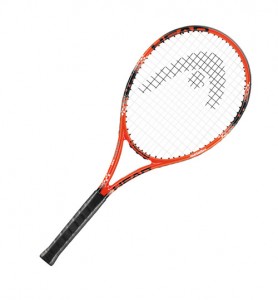
Depending on where you take your racquets for maintenance and the quality of string you use, the price for stringing can range anywhere from $25 to $40. So restringing a racquet that cost less than $50 new is generally not a good investment.
Once that decision is made, you then have to consider the type of string you wish to use. That decision will be based on many considerations including your playing level, the number of crosses and mains on your racquet, whether or not you suffer from tennis elbow and so on.
Your stringer can help you make a decision about the kind of string you should use. Alternatively, you can use the Internet to do some research and make a decision on your own.
Finally, you arrive at the question of tension. How tight should you string your racquet?
The answer to this question depends on how you want your racquet to perform. If you want a racquet that provides stability and power, you will want to string it one way. If you want a racquet that provides touch and control, you will want to string it another way.
Every racquet has a recommended range for tension. My Wilson [K]Surge, for example, has a recommended range of 55-65 pounds. The low end of this range will create a string bed with more give. The high end of this range will create a tighter string bed.
Beginners and intermediate players who play infrequently will usually choose to string their racquets at the low end of the range because they want their strings to absorb much of the energy upon impact with the tennis ball. They also want the power that looser strings seem to offer.
Looser string beds are more forgiving than tighter string beds. So stringing their tennis racquet at the low end of the range allows players to get away with more misshits and other mistakes.
Many advanced and expert players, on the other hand, prefer a tight string bed on their tennis racquets. Players at this level have enormous control over their swing speed. They also have superior directional control and don’t make as many errors as beginner or intermediate tennis players.
For the rest of us, who are somewhere in between the beginners and the experts, the best tension is also somewhere in the middle. Find the label on your racquet indicating the recommended tension for your racquet and then instruct your stringer to string it somewhere in the middle.
[wdsm_ad id=”39760″ class=” ” ]
